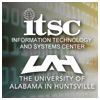New LANCE AMSR-E Near Real-Time Version 11 L2A Algorithm
The near real-time LANCE AMSR-E system at the AMSR-E SIPS and GHRC DAAC is pleased to
announce that we have integrated a new Version 11 L2A near real-time algorithm from Remote Sensing Systems
(RSS) into our processing systems. These much improved version 11 brightness temperatures, as well as the
corresponding L2B and L3 daily derived products, are available in the operational areas on our lance servers
at
https://lance.nsstc.nasa.gov/amsr2-science/data and
http://lance.itsc.uah.edu/amsr2-science/data.
This new near real-time (NRT) L2A algorithm is comparable to the Version 11 L2A algorithm
currently used at the AMSR-E SIPS. We are seeing only very small differences (less than 1 Kelvin in most cases)
in the data produced by the new NRT Version 11 algorithm compared to the Version 11 standard data product algorithm.
The primary differences between the new Version 11 NRT L2A code and the L2A science code used in the SIPS for generating
research-quality L2A brightness temperatures are:
- For estimating the cold mirror spillover at 7-GHz, a climatology for the Earth's 7-GHz antenna temperature (TA) is used. The SIPS science code uses a combination of climatology and actual observations, when available. However using actual observations requires saving data from the previous orbit. The error introduced by this simplification for NRT processing is the spillover value (0.004) times the error in specifying TA (typically 15 K). Thus the typical error in the L2A brightness temperature at 7-GHz is 0.06 K.
- For NRT processing, the effective temperature for the hot load is computed from a static table as compared to the SIPS science code that uses a dynamic effective temperature based on ancillary data. The science code also averages over the previous orbit to obtain a smoothed effective temperature. The typical error between the static and dynamic effective temperature is 0.2 K but can be higher at certain times of the year and latitudes.
The Version 11 NRT data are significantly improved compared to the current Version 9 NRT data. A major improvement from the current NRT algorithm is:
- RSS added the glint angles of the DirecTV 1 0 and 11 satellites to the Geostationary_Satellite_Glint_Angles field. The low glint angles correlate well with the recent observed RFI artifacts. Over oceans, RFI can be intense: +50 K for 18.7V, and +100 K for 18.7H. Cases this large correspond to low wind conditions with very smooth seas. Initial analysis over land did not reveal significant RFI impacts. The affected period for this RFI is from July, 2007 forward.
We will continue to evaluate the version 11 NRT data during the next year and document our findings on our LANCE site at http://lance.nsstc.nasa.gov/.
- Log in to post comments




